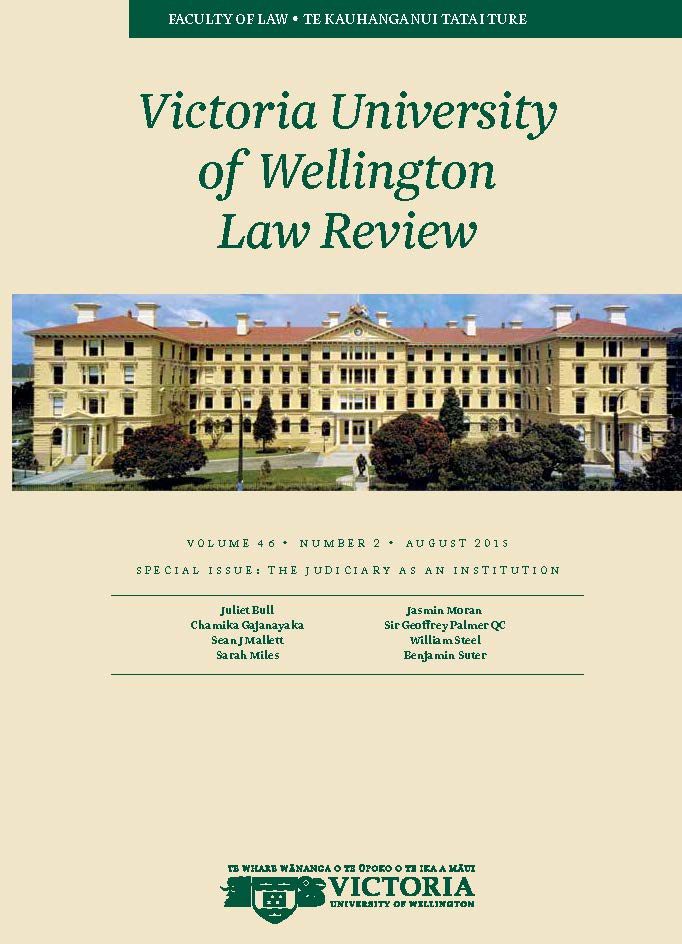Judicial Recusal in New Zealand: Looking to Procedure as the Principled
DOI:
https://doi.org/10.26686/vuwlr.v46i2.4921Abstract
The well-documented Wool Board Disestablishment Co v Saxmere Co litigation thrust the often dormant issue of conflicts of interest between a judge and a litigant into the limelight. Now that the dust has settled on the controversy that culminated in Wilson J's resignation, it is pertinent to question the status quo and investigate the potential cause of these events. More importantly, it is critical to consider whether measures need to be taken to prevent, or at least to reduce the likelihood of, another such occurrence.
This article takes a principled approach to analysing judicial recusal law in New Zealand, with a particular focus on procedure. In doing so, a mismatch between process theory and the reality of haphazard self-regulation highlights the procedural shortcomings of the current judicial recusal paradigm. To remedy this, the author applies aspects of process theory to reform judicial recusal procedure and bring it in line with general civil litigation practice. The proposed reform instils some fundamental practices that are presently absent in recusal procedure. To contextualise the article's findings, the author revisits the Saxmere saga first to posit that a lack of procedural safeguards may have contributed to the saga and secondly, to suggest that, had the procedural safeguards proposed by this article been in place, the controversy could have been mitigated, if not avoided.
Downloads
Downloads
Published
How to Cite
Issue
Section
License
Authors retain copyright in their work published in the Victoria University of Wellington Law Review.


